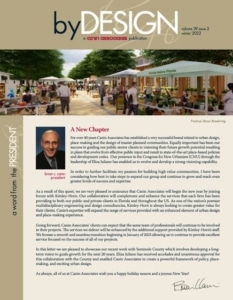Mobility Planning for Long Term Economic Development
At Canin Associates, we like to study history and precedents. It’s useful to know where you’ve been if you want to decide where you want to go in the future. For a while now I have personally been fascinated with the Dark Ages, that period in medieval history when society lost track of its roots and culture for 800 to 1,000 years. So what happened in the Dark Ages? Essentially the great cultural institutions and philosophy developed by the Greeks and adopted by the Romans, all completely disappeared with the sack of Rome in 410 AD.
This is when the Huns, the Goths and other barbarians overran and destroyed the Roman Empire and wiped out all the institutional knowledge that had been available to the population at large. This culture however was kept alive in select monasteries where the monks painfully recorded this information by hand and passed it on within the church. But for everyone else in the general population it was lost until the Renaissance which occurred in the late 14 Century. This cultural knowledge was widely rediscovered with the invention of the printing press when it became possible to widely disseminate the information that was lost. This led to the birth of the Renaissance and an explosion of creative ideas. Beautiful new towns emerged and many still exist as wonderful places to this day.
In the 1800’s in the U.S. we had the Industrial Revolution. This led to a great influx of population from the countryside to cities. In the late 1870’s this transitioned into what we know as the “Golden Age of Urbanism” which is the period from 1870 to 1940, approximately 70 years. This is a very interesting growth period where our urban environments transitioned from dependence on the horse and buggy to the electrification of cities and we built streetcars and gradually buses and automobiles were added to the mix. In this Golden Age we had compact patterns of urbanism. We had mixed uses. Work, living and shopping all occurred in very close proximity. This is still in evidence in many of our big cities and also in many smaller communities like Winter Park, FL Boulder, CO, and Santa Barbara, CA.
Then we have the period of 1940 to 2010, in which we experienced vast changes in urban pattern and the physical expansion of urban areas made possible by the pervasive ownership of automobiles and the resulting explosion of Suburbia. This occurred after World War II. I think in some ways we can argue that this is like our Dark Age, in that several generations have completely lost touch and have no institutional memory of what it is like to live in mixed-use, walkable, bikable, transit enhanced environments that are not totally dependent on the automobile. And of course we can put metrics to this period to inform us in more depth of what we may have won and what we may have lost in this evolution.
At Canin Associates, we believe we can recreate a Golden Age of urbanism for a new Urban Renaissance in the 21st century that is compact, multi-modal, that attracts high-value corporate businesses and the talented creative class that we know are drawn to place-based exciting vibrant communities. This type of mobility planning and urbanism – which is the core element in this way of managing growth – can be a very powerful regional economic development driver.
So let’s look at all of this in more detail. Please enjoy this presentation that is based on the discussion above. Let us know what you think! This presentation was first delivered at the APA Florida Conference in the fall of 2012.
Brian C. Canin


